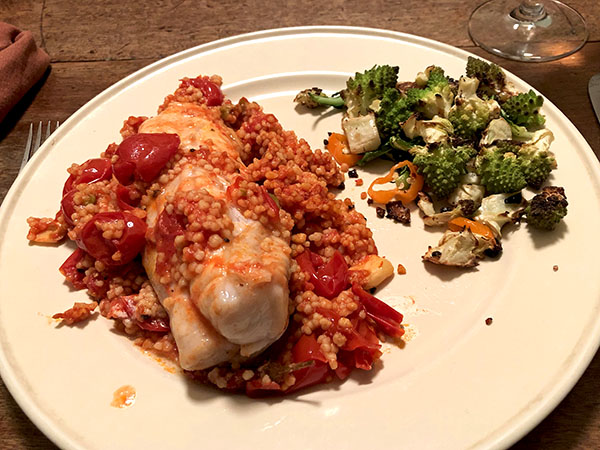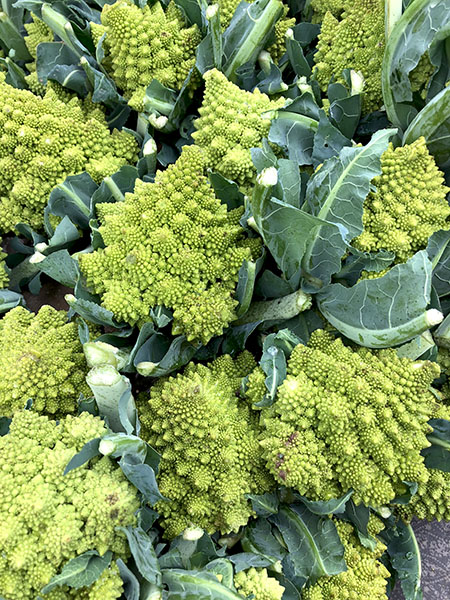
Say it fast: ‘coda di rospo inguazato con broccoli romanesco‘.
We had returned from a month in Berlin only 4 days earlier, where ‘monkfish’ is called Seeteufel [‘sea devil’], a response to its appearance when hauled from the sea. I’ve been enjoying using German names to describe food normally not specific to German cookery, but I wasn’t tempted this time, especially if I was also going to include the name of the vegetable that accompanied this wonderful dish.
And while both the German and the Italian names (the latter translates as ‘tail of a toad’) describe the fish itself better than the English, ‘monkfish’, none of them comes close to describing the taste of its flesh, its’ tail’, which is so much more pleasant than its scary mug.
- two 9-ounce monkfish tails from P.E. & D.D. Seafood, prepared using a David Pasternak recipe which includes M’hamsa Couscous from Tunisia (purchased at Whole Foods), olive oil, sliced garlic John D. Madura Farm, two 400-gram cans of really superb Mutti baby Roma tomatoes from Eataly (which are also available at Whole Foods), and cracked Sicilian green olives from Whole Foods, and 2 whole dried Sicilian pepperoncino from Buon Italia

- one small head of Romanesco broccoli from Alewife Farm, broken up into florets, tossed with a little olive oil (not too much, to ensure a slightly crispy, slightly carbonized finish), salt, pepper, and one crushed section of a dark dried habanada pepper, the mix spread onto a Pampered Chef unglazed ceramic pan and roasted at 400º for about 25 minutes, some slices of a fresh habanada pepper added to the pan a few minutes before the broccoli was removed from the oven, the mix stirred and arranged on the plate
- the wine was an Italian (Sardinia) white, La Cala Vermentino di Sardegna 2015
- the music was that of Carl Nielsen, including several chamber works the Symphony no 1 in G minor